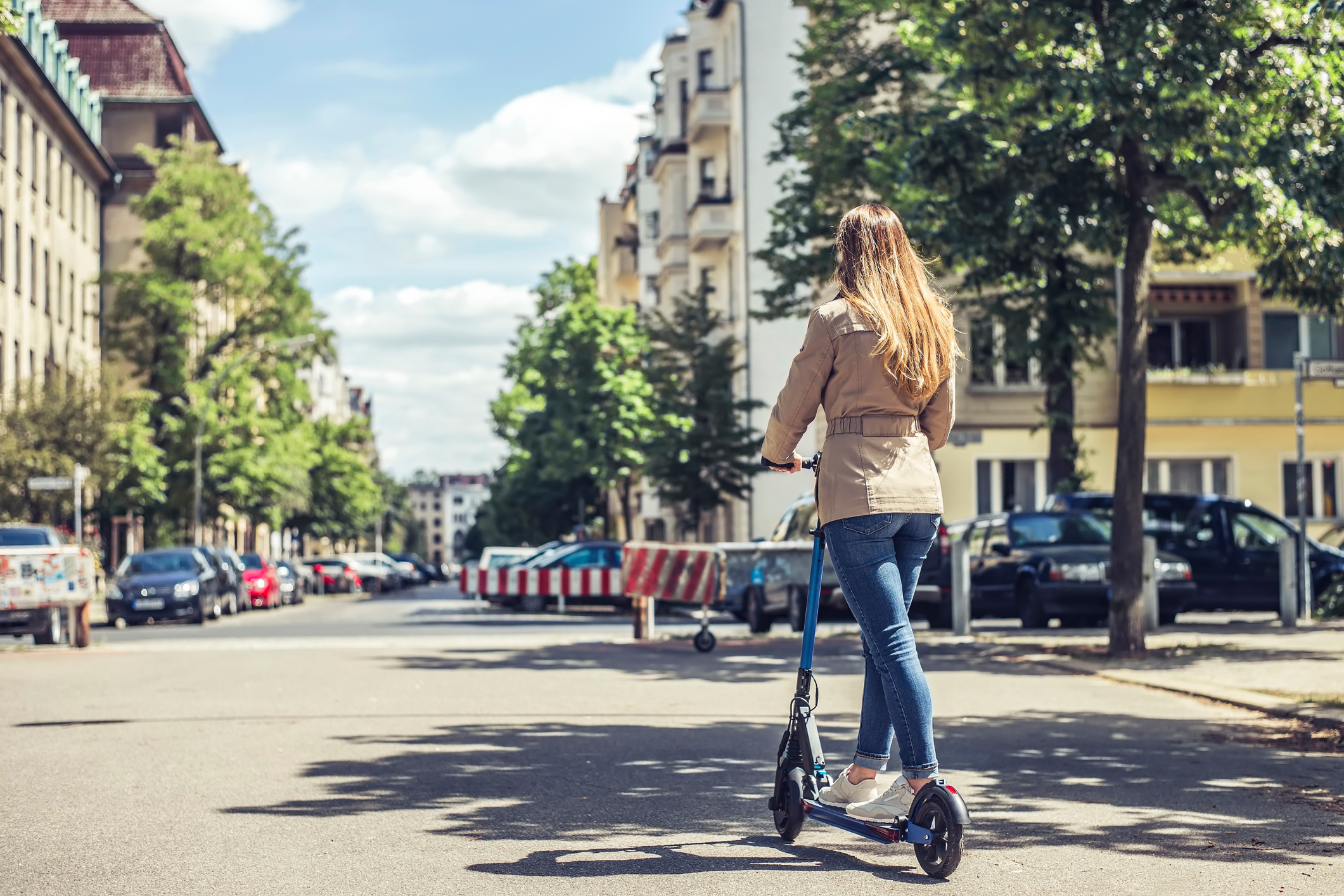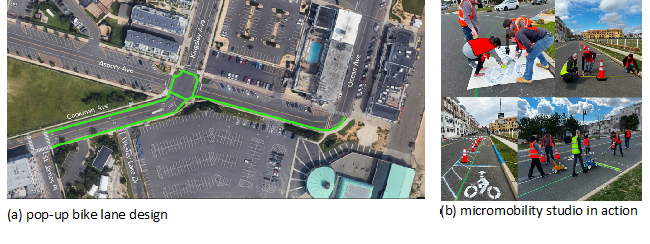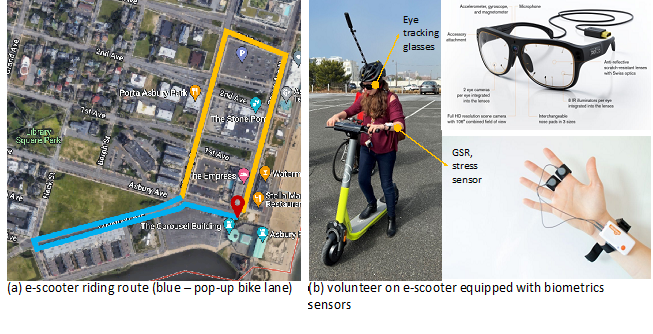By Wenwen Zhang, Hannah Younes, Leigh Ann Von Hagen, Clint Andrews, and Robert B. Noland
E-scooters are a low-emission and affordable mode of transportation that contributes to environmental and mobility equity goals. The use of e-scooters, however, has resulted in an estimated 70,000 emergency department visits and at least 41 fatalities between 2014 and 2019. There is still a limited understanding of the factors that lead to unsafe and unpleasant travel experiences for e-scooter users to inform more human-oriented road design. We piloted a real-world e-scooter user experiment by equipping a volunteer with biometric sensors including eye tracking glasses and stress sensors. Our objective was to explore the feasibility of examining the impact of the perceived travel environment on the stress level of an e-scooter user. The results of this pilot data collection effort provide insights on the potential use of the latest sensor technology and computer vision algorithms to understand travel behavior for new and emerging transportation modes.
We conducted a temporary demonstration project in Asbury Park, NJ in April 2022, funded by the National Science Foundation. This involved making simple and cheap changes to a road, in this case by setting up a temporary (pop-up) bicycle lane. Working with local authorities, students in a Bloustein studio course placed a chalk-drawn line and cones through a high-traffic intersection to analyze how this affected e-scooter safety (see Figure 1). The intersection was particularly hazardous due to its wide turning angle for drivers coming from downtown Asbury Park and traveling towards the beach. Motor vehicles often did not slow down sufficiently when turning right.
Figure 1: Temporary bike lane demonstration set up in Asbury Park, NJ by Bloustein students
As part of the demonstration project, we conducted an experiment using biometric sensors to measure stress and cognitive workload while using an e-scooter. A volunteer was equipped with eye tracking glasses and galvanic skin response (GSR) stress sensors while riding a short pre-defined route that included the pop-up bike lane (see Figure 2). The eye tracking glasses collected video data on what the user viewed along with the gaze and fixation of the user’s eyes. The stress sensor captured skin conductivity data, which is used to measure human stress levels.
Figure 2: E-scooter riding experiment setup
We used a computer vision algorithm, PSPNet, that automatically segments images into over 40 different object types [see example in Figure 3] to analyze the video and eye fixation data. We found that the average eye fixation duration is longer in more relaxing travel environments and tends to be shorter in non-signalized intersections (likely because the rider has to track different moving objects). Additionally, the rider focused more on other road users (e.g., cars, vans, pedestrians, cyclists) at the intersections compared with traveling along road segments, where the volunteer paid more attention to road amenities (e.g., trees, bushes, buildings), see Figure 4.

Figure 3: Example of eye-tracking video image segmentation result using PSPNet. Red dot indicates eye fixation point.

Signalized intersection

Non-signalized intersection

Road segment

(a) average eye fixation duration (ms)

Distribution of fixation time by focused road objects
Figure 4: Preliminary eye tracking results
We also found that the GSR sensor can effectively capture the rider’s stress level. The GSR reading peaked after a near-fall event in the third loop of the trial. It was also observed that stress level increased at non-signalized intersections with busy traffic (see Figure 5).
Figure 5: GSR readings and labeled events
This pilot experiment suggests that biometric sensors can successfully monitor stress levels and attention span, possibly helping in identifying problematic intersections or roadways, although more research is needed to confirm this. We will launch a larger data collection effort in Spring 2023 on Rutgers College Avenue campus to develop models that systematically examine the impact of the perceived road environment on e-scooter riders’ stress levels. The ultimate results of this work will inform policy makers on how to design safer road infrastructure for all users.




